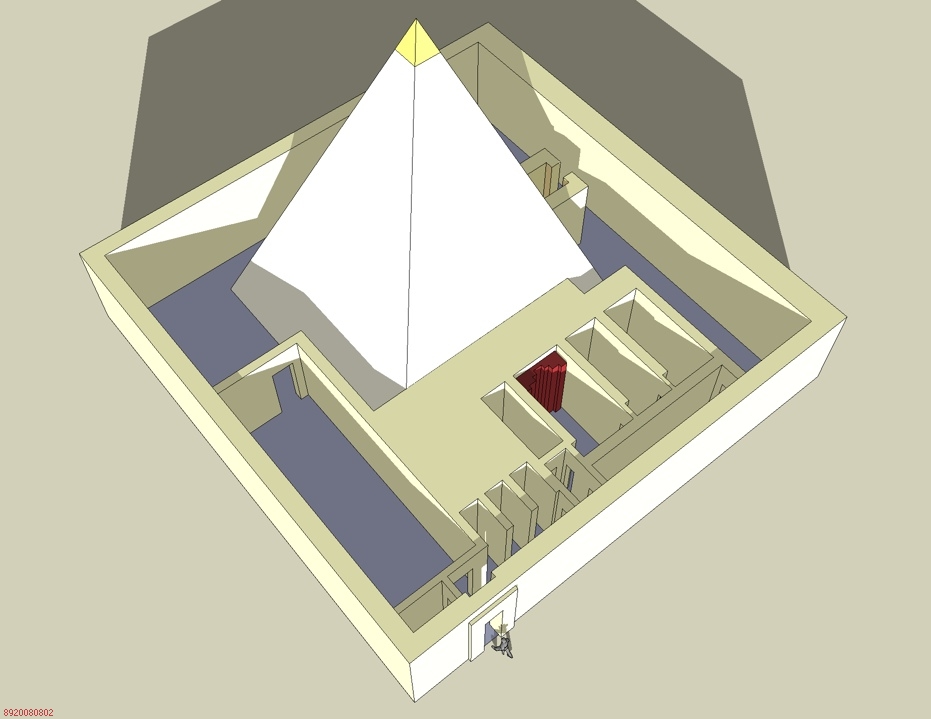Khuit II on:
[Wikipedia]
[Google]
[Amazon]
Khuit II () was a wife of King
 The pyramids of Iput I and Khuit were discovered between July 1897 and February 1899 by
The pyramids of Iput I and Khuit were discovered between July 1897 and February 1899 by
Teti
Teti, less commonly known as Othoes, sometimes also Tata, Atat, or Athath in outdated sources (died 2333 BC), was the first pharaoh, king of the Sixth Dynasty of Egypt. He was buried at Saqqara. The exact length of his reign has been destroye ...
, the first king
King is a royal title given to a male monarch. A king is an Absolute monarchy, absolute monarch if he holds unrestricted Government, governmental power or exercises full sovereignty over a nation. Conversely, he is a Constitutional monarchy, ...
of the Sixth Dynasty of Egypt
The Sixth Dynasty of ancient Egypt (notated Dynasty VI), along with the Third Dynasty of Egypt, Third, Fourth Dynasty of Egypt, Fourth and Fifth Dynasty of Egypt, Fifth Dynasty, constitutes the Old Kingdom of Egypt, Old Kingdom of Dynastic Egyp ...
.
Biography
Khuit may have been the first prominent royal wife from the reign of Teti. If so, her position would later be taken over byIput
Iput I ( 2375 BC - 2325 BC) was a queen of ancient Egypt, a daughter of Pharaoh, King Unas, the last king of the Fifth Dynasty of Egypt. She married Teti, the first King of the Sixth Dynasty of Egypt. Their son was Pepi I Meryre, Pepi I.Dodson, ...
.
Khuit may have been the mother of King Userkare
Userkare (also Woserkare, meaning "Powerful is the soul of Ra"; died 2332 BC) was the second Pharaoh, king of the Sixth dynasty of Egypt, Sixth Dynasty of Ancient Egypt, Egypt, reigning briefly, 1 to 5 years, in the late 24th or the early 23rd ...
(according to Jánosi and Callender), but this is not at all certain and some would have a queen named Khentkaus IV as the mother of Userkare. Khuit was the mother of Tetiankhkem
Tetiankhkem ( 2350 BC - 2335 BCZahi Hawass. ''Silent Images: Women in Pharanoic Egypt''.) was an Ancient Egyptian prince who lived at the beginning of the Sixth Dynasty of Egypt.
His name means "Tetiankh the Black" or "Black Teti lives" and is c ...
, whilst Khuit's daughter could have been Seshseshet Sheshit.
According to her monuments, Khuit held the titles:
* King's Wife (''ḥmt-niswt'') and King's Wife, his beloved (''ḥmt-niswt mryt.f'')
* Companion of Horus (''smrt-ḥrw'')
Burial
 The pyramids of Iput I and Khuit were discovered between July 1897 and February 1899 by
The pyramids of Iput I and Khuit were discovered between July 1897 and February 1899 by Victor Loret
Victor Clement Georges Philippe Loret (1 September 1859 – 3 February 1946) was a French Egyptologist.
Biography
His father, Clément Loret, was a professional organist and composer, of Belgian origin, who had been living in Paris since ...
just north of Teti's pyramid complex at Saqqara
Saqqara ( : saqqāra ), also spelled Sakkara or Saccara in English , is an Egyptian village in the markaz (county) of Badrashin in the Giza Governorate, that contains ancient burial grounds of Egyptian royalty, serving as the necropolis for ...
.Lauer, Jean Phillipe. Saqqara: The Royal Cemetery of Memphis, Excavations and Discoveries since 1850. Charles Scribner's Sons. 1976.
Loret initially thought Khuit's tomb was a mastaba. Excavations in the 1960s by Maragioglio and Rinaldi first suggested that Khuit had been buried in a pyramid. Remains of masonry belonging to the ruins of a small mortuary temple were found as well. Further excavations in 1995 by Hawass have confirmed that Khuit's tomb was a pyramid. Excavations of the pyramid itself revealed a burial chamber with a pink granite sarcophagus. The mortuary temple associated with her funerary complex is located to the east of the pyramid. The temple included an offering room with a false door
A false door, or recessed niche, is an artistic representation of a door which does not function like a real door. They can be carved in a wall or painted on it. They are a common architectural element in the tombs of ancient Egypt, but appeared p ...
and an altar. The temple walls were decorated and showed scenes of offering bearers.Verner, Miroslav. The Pyramids: The Mystery, Culture, and Science of Egypt's Great Monuments. Grove Press. 2001.
References
{{DEFAULTSORT:Khuit 24th-century BC women Queens consort of the Sixth Dynasty of Egypt 24th-century BC births 24th-century BC deaths